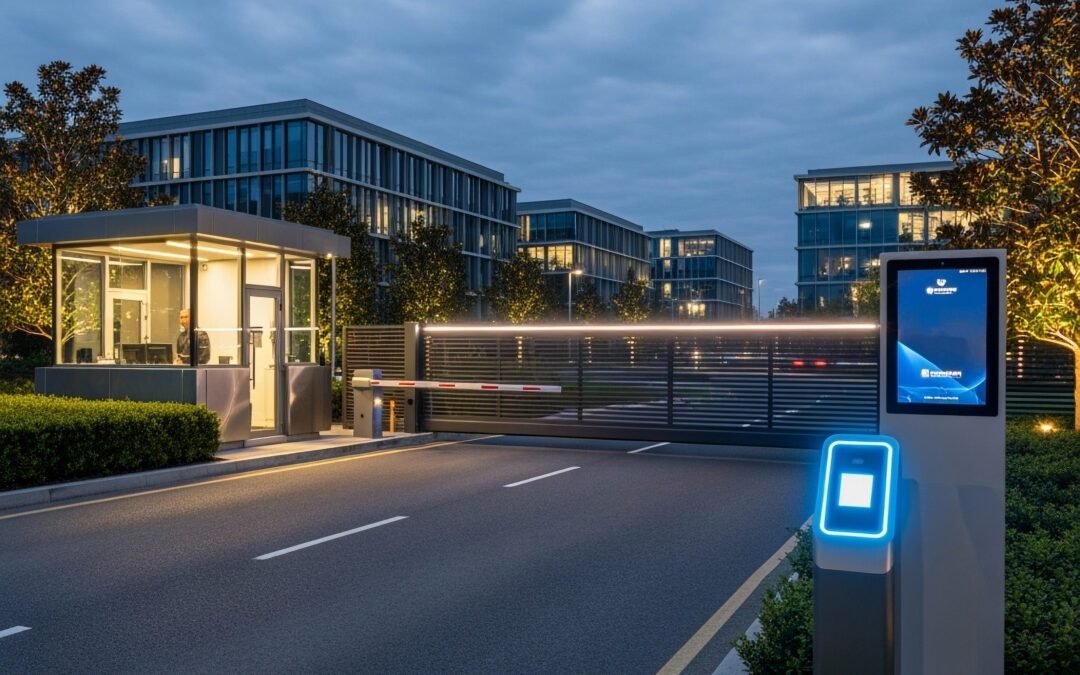Table of Contents
Introduction: Why Access Control and Gate Operation Are Essential - The Role of Gateways and Access Control in Various Industries
- Benefits of Integrated Access Control and Gate Systems
- How Modern Technology Transforms Access Management
The Future of Access Control: AI, Analytics, and User – F riendly Solutions Why Your Business Needs a Trusted Partner – Atlanta Access Controls (AAC) - Unlocking Efficiency, Security, and Safety Today and Tomorrow
- Final Thoughts: Elevate Your Security with AAC
Introduction: Why Access Control and Gate Operation Ar e Essential
The Role of Gateways and Access Control in Various Industries
Gate operators and access control systems serve as the frontline defense in many sectors:
Educational Facilities: Schools and universities need secure campuses that restrict entry to authorized personnel and students, preventing unauthorized visitors while enabling quick, seamless access for staff and emergency responders. Healthcare Facilities: Hospitals require strict access controls to sensitive patient areas, medication storage, a nd administrative offices, ensuring safety and compliance. Transportation Facilities: Airports, train stations, and transit hubs rely heavily on gate operators and access control to manage daily traffic, monitor vehicle entry, and prevent unauthorized acce ss. Commercial Businesses: Offices, warehouses, and manufacturing plants benefit from integrated access systems that streamline entry points, reduce security risks, and improve workflow.
Benefits of Integrated Access Control and Gate Systems
https://www.quora.com/What-are-the-benefits-of-access-control-systems
https://www.quora.com/What-are-the-benefits-of-access-control-systems
Security and Safety: First and foremost, access control systems prevent unauthorized entry, reducing theft, vandalism, and safet y hazards. Gate operators add an extra layer, controlling vehicle access and monitoring traffic flow. Enhanced Tracking and Monitoring: Modern systems provide detailed logs of entries and exits, which are invaluable for security audits, emergency situatio ns, or compliance requirements. Operational Efficiency: Automated gates and access systems eliminate the need for manual checks, reducing wait times and freeing up staff resources. For example, employees with key cards or mobile credentials can access fac ilities quickly, saving valuable time. Cost Savings: Over time, integrated systems decrease staffing needs for security and reduce the costs associated with security breaches. Additionally, they minimize disruptions caused by unauthorized access or securi ty incidents. Improved Customer and Employee Experience: User – friendly access solutions, like mobile credentials and biometric authentication, provide seamless entry, enhancing overall satisfaction and productivity. Case in Point: A large educational cam pus installed a comprehensive access control and gate system that managed both pedestrian and vehicle entry. The result was a 40% reduction in unauthorized access incidents and a 25% decrease in security staffing costs. For more information, click and learn: https://www.quora.com/What-are-the-benefits-of-access-control-systems
How Modern Technology Transforms Ac cess Management
The landscape of access control and gate operation is rapidly evolving with technological advancements:
Biometric Authentication: Fingerprint, facial recognition, and retinal scans are becoming standard, offering enhanced security and quick user verification. Mobile Credentials: Smartphone – based access allows users to unlock doors or gates via apps, reducing the need for physical cards or fobs. Cloud – Based Systems: Cloud platforms enable remote management, real – time monitoring, and easi er updates, making security scalable and flexible. Integrated Systems: Combining access control with video surveillance, alarm systems, and intercoms creates a cohesive security environment. Analytics and Artificial Intelligence (AI): AI – powered systems an alyze access patterns, detect anomalies, and trigger alerts automatically, preventing security breaches before they occur.
Statistics on Current and Future Trends
According to MarketsandMarkets , the access control market is projected to grow from $10 billion in 2021 to over $15 billion by 2026. Mobile access credentials are expected to account for nearly 65% of access control transactions by 2025. AI integration in security systems is predicted to increase efficiency by approximately 30%, helping organ izations identify threats more quickly and accurately.
What Businesses Can Expect

